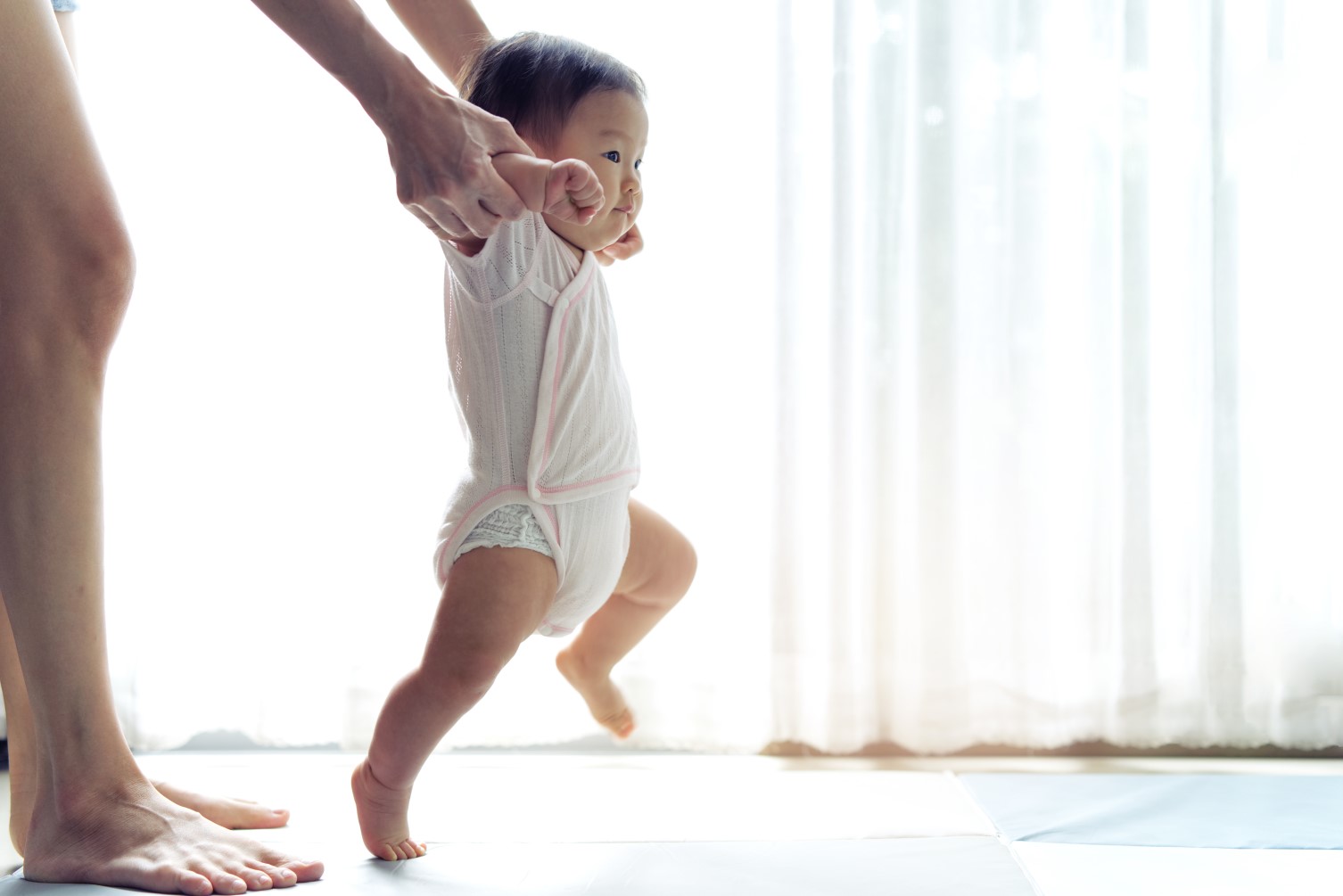
The day your little one takes their first steps is an exciting and joyous occasion for both you and your baby - and a lot goes into it. In order to start toddling about, your child needs to pass a range of developmental milestones which help them to grow and nurture their muscles. They’re learning to use their legs in a way they never have before, and as you can imagine, that’s quite a task.
So can learning to walk affect other aspects of your child’s behaviour and development?
Think about how the events in your own life can affect your sleep. Of course external stimuli such as bright lights, car alarms and fretful babies can all keep you up at night, but new experiences in the daytime can also have a big impact on your sleep patterns. Sometimes they can prevent you from getting as much sleep as you’d like, because your mind is racing with the new events of the day. If it’s a physical change, you might also find muscle soreness prevents you from being comfortable when you lie down to sleep. On the other hand, the physical and mental exertion of experiencing new things can mean that you’re more tired when it’s time for bed and so you sleep more than you usually would.
The same basic principle applies to babies. Learning to walk (and other big changes such as learning to talk) can throw your baby off their usual sleeping rhythm, which may show itself as them waking up more often in the night, taking longer to drop off, or having more naps during the daytime. However, the changes might not end with sleep.
Chances are, you’re aware that when you yourself haven’t had a great night’s sleep, your behaviour is affected. You might be grumpy, less patient, and generally not as happy as usual. This can also happen if you’ve slept more than usual, leaving you feeling overly drowsy or sluggish. This happens to babies as well - only they often can’t communicate this easily. Learning to walk can sometimes result in babies being extra fussy or grizzly at times because of the extra exertion, all of which is perfectly natural.
Another common side effect of learning to walk is a change in your baby’s appearance or, more specifically, their weight. If you’ve been marvelling at how quickly your baby has grown over the previous months, it might be a little surprising to notice that they’ve lost weight or just not gained as much weight during the time when they’re learning to walk. Fortunately, this is a very normal consequence of your baby increasing their physical activity levels.
Before they learn to walk or crawl, babies spend most of their time lying down - either in bed or on the floor, or being carried around by an adult. As you can imagine, this doesn’t take too much energy - most of their energy intake goes towards development and weight gain rather than powering physical movement. But when they do start moving around, the balance shifts, putting more energy into movement and less into growth and development. This gives them the energy they need to explore their environment, with the side effect of meaning they don’t grow as quickly as before.
As a result, learning to walk can also cause your baby to need feeding more often. With all those extra calories burned through physical activity, they’ll be hungrier and may be fussy or grizzly because of it. This can also contribute to sleep disruption - your baby might wake in the night wanting to be fed.
Extreme weight loss or gain may be a sign of a problem. If you notice this in your baby or you’re worried about their development in any way, speak to your doctor or health visitor about their symptoms.
We know that physical activity is good for children and adults alike, but if your toddler is particularly active, you may be wondering how much is too much. Generally, once your baby is walking, a good target to aim for is 180 minutes or three hours of physical activity a day. This should be spread over the day as a whole.
If your toddler seems to have a lot of energy, the best thing to do is to give them a safe way to burn that extra energy. For example, going out every day to a park or green space where they can run around or play can help to tire them out so they’re less restless while indoors. It’s also a good idea to gradually get them used to quiet time, where they sit still and concentrate on a task such as doodling or colouring.
Overall, though, there isn’t a set amount of exercise that’s too much for your little one, so long as they’re wearing shoes that support their feet well. Just remember when you’re out and about that little legs tire more easily than you do. Your little one will likely let you know when they’ve had enough activity - and they’re unlikely to push themselves past their limits if you encourage them to rest when they need it. As always, if you’re at all concerned about your child’s activity levels, it’s a good idea to speak to your doctor or health visitor about your situation.
Author: Click Consult, published 21-03-2023.